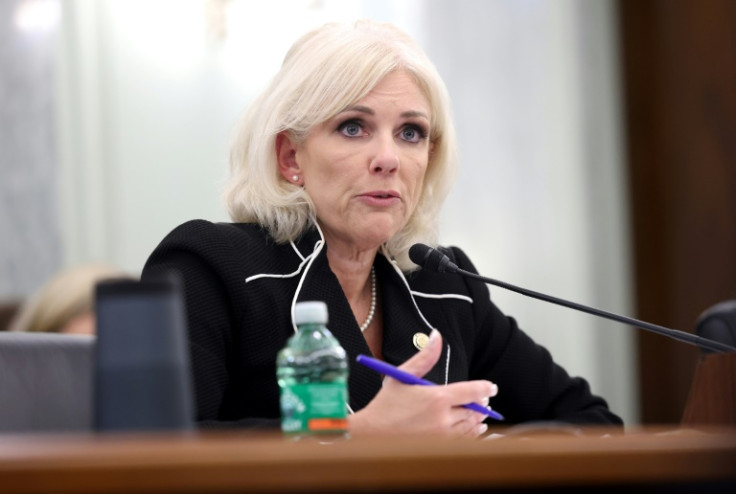US Officials Press For Answers On Boeing Emergency On Alaska Airlines

US transportation investigators pressed officials from Boeing and a top supplier on Tuesday over manufacturing lapses that led to a near-catastrophic January incident on a 737 MAX that necessitated an emergency landing.
In the two-day hearing, which concludes Wednesday, the National Transportation Safety Board aims to pinpoint what went wrong and craft recommendations after a fuselage panel known as a door-plug suddenly came off mid-flight on an Alaska Airlines plane.
Video of the episode showed oxygen masks hanging in front of a gaping hole in the plane after the panel blew out shortly after takeoff, leaving passengers exposed to open air at an altitude of about 16,000 feet.
The NTSB has previously said that four bolts securing the panel were missing, according to preliminary findings.
After morning questions that touched on employee training and policies around change orders, an afternoon session dug into the details on repair work performed on the door-plug that was not properly documented.
When the fuselage was shipped by train to Boeing's Renton, Washington, facility on August 31, 2023, from supplier Spirit AeroSystems, evidence showed that the bolts were in place, NTSB investigator in charge John Lovell said at the outset of Tuesday's session.
Boeing staff performed work on the part beginning early in the morning of September 18 until late in the evening of September 19 before the jet was delivered to Alaska Airlines, Lovell said.
The work was needed after Boeing staff determined rivets were not in conformance with standards.
Lovell said that the rivets were replaced under a non-conformance order, with the work conducted by Spirit personnel at Boeing's Renton factory.
But while Spirit personnel performed the work on the rivets, Spirit was not authorized to remove or reinstall the door plug and would not have done so, Spirit's Michael Riney testified.
When the door plug was removed to replace the rivets, workers failed to file the documentation to make the change on the door plug, according to Elizabeth Lund, senior vice president for quality at Boeing.
As a result, there was also no documentation for when the door plug was reinstalled. Lund told the panel that Boeing door staff would have been authorized to open or close the door plug.
Lund told the panel that the "primary" place to identify the lapse would have been through such documentation, "open paperwork, which we don't believe existed."
Summing up this issue later, NTSB Chair Jennifer Homendy asked Lund late Tuesday afternoon, "We do not know specifically when this door plug ... We do not know by whom."
"Correct," Lund responded.
The two-day hearing continues Wednesday, with sessions involving Boeing's quality management and oversight by the Federal Aviation Administration.
Homendy said the hearing should focus on unanswered questions and Boeing's operations before the Alaska Airlines incident rather than steps Boeing has taken in the aftermath.
"This is not a PR campaign for Boeing," said NTSB Chair Jennifer Homendy. "What I want to know, what we want to know, is what happened" in the period before January 5.
Lund came under fire from the NTSB after discussing the probe in a Boeing-hosted tour of Renton, with the agency sanctioning Boeing for sharing details about an ongoing probe that were not supposed to be discussed publicly.
As a result, the NTSB said it is blocking Boeing from reviewing information gathered in its investigation and will not permit the company to ask questions of other witnesses at the hearing.
Homendy in March had also sharply criticized Boeing's handling of the probe, telling a congressional hearing the company was dragging its feet in providing key documentation and witnesses involved in working on the plane.
Tuesday's hearing comes as Boeing faces heavy scrutiny from regulators following the January incident and in the wake of congressional testimony from whistleblowers who say the company punishes workers who raise safety issues while moving to cover up problems.
Lund acknowledged the need for better communications and the simplification of some procedures at Boeing, but stressed that the company was committed to improving.
Lund recounted a quality "stand down" in which some 70,000 workers took an eight-hour work day to review safety policies. The company took 30,000 recommendations of employee feedback on "how we can improve quality or product safety."
But prior to the January 5 incident Boeing's "training was in really bad shape," said Lloyd Catlin, of the International Association of Machinists. "There has been changes, but I don't know that it is enough."

© Copyright AFP 2025. All rights reserved.





















